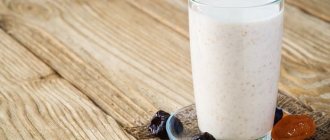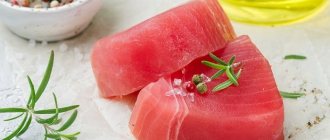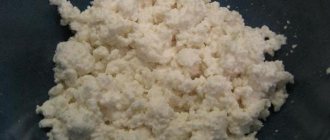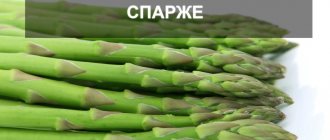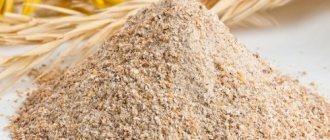Apples are one of the most popular fruits in many countries around the world. The product is considered the most affordable source of valuable vitamins and minerals. The low calorie content of the fruit and the possibility of long-term storage without loss of beneficial properties have made apples of various varieties an optimal component of different diets. Currently, there are many varieties of fruit, each of which has its own healing qualities for the human body. The fruits are especially valuable for women and children. The chemical composition and calorie content of the product largely depends on the variety and processing method. Fresh fruits are considered the most valuable.
Chemical composition
The amount of beneficial components in each apple variety differs, but the difference is small. Typically, 100 grams of product contain the following valuable substances:
| Components | Approximate quantity per 100 g | |
| Vitamins |
| |
| Microelements |
| |
| Macronutrients |
| |
| Organic acids | 0.7-1.2 g | |
| Cellulose | 1.5-1.9 g | |
| Water | Almost 85 g | |
| Sugar | 9-10 g | |
| Amino acids |
| |
| Starch | 0.9-1 g | |
The nutritional value of the product lies in the ratio of proteins, fats and carbohydrates (BJU) and per 100 grams is 0.5/0.4/9.5. Apples contain the largest amount of carbohydrates, which are represented by sucrose, fructose, monosaccharides and disaccharides.
How many calories are in one apple
When compiling a diet, many are interested in how much is in 1 piece. apples calories? There are 47 kcal per 100 grams. The average weight of one apple is 170-180 grams. It turns out that the energy value of one average fruit reaches 80-90 kcal.
But not everything is so simple. The calorie content of these fruits depends on several factors. It is influenced by:
- fruit weight and size;
- their variety;
- pulp texture;
- skin color;
- place of crop ripening, etc.
So, the redder the apple skin, the higher the energy value. Varieties grown in northern regions have a more neutral taste with sourness. They are great for diet menus. Apples that grew in the southern regions under the rays of the sun seem juicier and sweeter. But the calorie content of such food is approximately 1.5 times higher.
It is also worth paying attention to the characteristics of the pulp. If it is elastic and juicy, then the calorie content in such a product is not high. When the pulp becomes sugary, similar to grains, the energy value of the delicacy increases.
ABC RECOMMENDS

How many calories are in a banana: beneficial properties and nutritional supplements
Energy value
Depending on the variety of apple, the calorie content differs, since each of them has a different peel composition. The energy value also changes during heat treatment or drying of the product:
| Varieties of apples | Approximate number of calories | |
| Green apples |
| |
| Red sweet apples |
| |
| Yellow apples | Golden - 50-55 kcal per 100 grams | |
| Considering the weight | 100 grams of product with peel - from 30 to 55 kcal, without peel - 28-32 kcal; per kilogram - 350-500 kcal; 1 medium-sized apple - 170-200 kcal | |
| Pickled apples | Depending on the variety, from 45 to 50 kcal per 100 grams | |
| Baked without sugar | Taking into account the type of fruit, from 85 to 95 kcal per 100 grams | |
| Apples in compote | From 70 to 80 kcal per 100 grams | |
| Apples in jam | From 150 to 300 kcal per 100 grams depending on the amount of sugar used in preparation | |
| Freshly squeezed apple juice | From 40 to 55 kcal per 100 ml | |
People who adhere to a diet should remember that dried or sun-dried apples have a high energy value, since during the drying process they lose water and the concentration of carbohydrates per 100 g increases. Depending on the variety of apples, the calorie content of a dried or dried product ranges from 250 to 300 kcal for every 100 g.
Glycemic index
For apples, the GI is the same and is only 30 units. They are slowly absorbed by the body, which has a beneficial effect on blood sugar levels and weight loss. Weight loss goes more smoothly, hunger is absent for a long time.
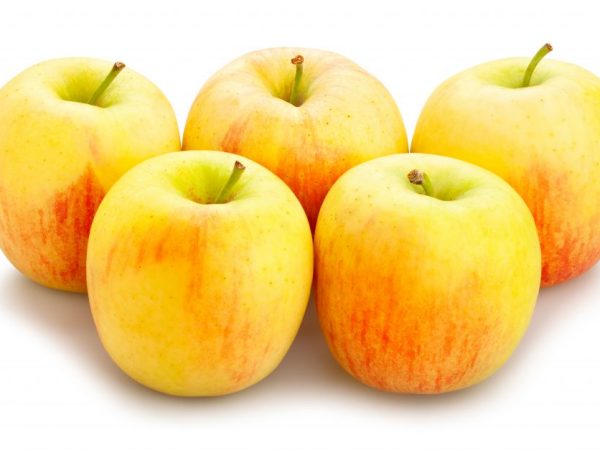
Apples can help you lose weight
However, not all fruits have a low indicator - this parameter depends on:
- varieties;
- conditions and duration of storage of the fruit;
- the climate where the tree grew;
- soil, fertilizing, frequency of watering the apple tree;
- availability and method of fruit processing.
Fresh apples of slightly sweet and sour varieties with green skin are most suitable for weight loss.
Compare how much the amount of GI changes:
| Peel color | Glycemic index |
| Green | 29-32 |
| Yellow | 3-36 |
| Red | 35-38 |
Beneficial features
The benefits of the product have been proven; when used correctly and the norm is controlled, it has an extremely positive effect on the human body. The following properties are considered the most valuable:
- saturates the body with minerals and vitamins;
- tones and invigorates;
- normalizes digestion, eliminates chronic constipation by stimulating intestinal motility;
- promotes the removal of toxins and waste from the body;
- regulates blood glucose levels due to low calorie content and moderate sugar content;
- strengthens the heart muscle;
- improves visual function;
- has mild laxative, antiseptic, anti-inflammatory, diuretic and choleretic effects;
- prevents the formation of cholesterol plaques and their deposition on the walls of blood vessels;
- has a sedative effect on the central nervous system, improves memory and attention, eliminates signs of neurosis and depression;
- relieves spasm of intestinal smooth muscles;
- helps maintain a slim figure by normalizing metabolic processes, promotes weight loss;
- improves the condition of tooth enamel, prevents the development of caries and the deposition of tartar;
- normalizes blood pressure numbers;
- restores liver cells;
- prevents swelling of the lower extremities;
- prevents thyroid pathologies, especially hypothyroidism.
For women, fruits of any variety are extremely beneficial, as they normalize hormonal balance, relieve menstrual pain, increase the elasticity of the skin and its firmness, improve the condition of hair and nails, and give strength. The fruit is especially valuable during pregnancy, as it helps replenish the deficiency of necessary components, helps the child develop correctly, and relieves symptoms of toxicosis.
The fruit is also useful for men, as it prevents the development of pathologies of the genitourinary system, increases endurance and physical strength, and improves sexual function.
For children, apples become an indispensable source of minerals, vitamins, strengthen the immune system and prevent frequent viral and colds, stimulate brain function, memory and attention.
Such beneficial properties are inherent not only in fresh fruits, but also in natural apple juice, dried and dried fruits, which can be stored for the winter.
Composition and benefits of apple juice
Apple juice has the same beneficial properties as the fruit itself. It is important that it is obtained from fresh fruits that have not been subjected to heat treatment. The low calorie content and nutritional composition of the drink make it beneficial for the whole body. In hot weather it perfectly quenches thirst. Beneficial effects on the body are manifested in:
- removal of free radicals;
- rejuvenation of the body;
- improving the functioning of the cardiovascular system;
- strengthening the walls of blood vessels;
- reducing the risk of developing stroke and heart attacks;
- elimination of inflammatory processes in the kidneys and urinary tract;
- reducing the symptomatic manifestations of a disease such as chronic constipation;
- normalization of the functioning of the nervous system.
It is better to prepare a healing drink yourself, using a juicer or any available means. It is important to remember that it should not be consumed by people with high stomach acidity or dysbacteriosis. The latter diagnosis is most often found in young children, and therefore you should not give apple juice before they reach six months of age.
Contraindications
Despite the benefits of the product for the human body, violation of the rules of use can cause significant harm to health. There are several contraindications:
- gastric ulcer with threat of perforation in the acute stage;
- gastritis with high acidity during exacerbation and taking medications;
- recovery period after surgery on the digestive system;
- inflammatory pathologies of the small or large intestine in the acute stage, for example, enteritis, colitis;
- individual intolerance to the product.
Patients with hyperthyroidism should avoid eating apple seeds, since the iodine they contain can aggravate the pathological condition. People who are losing weight and those who are obese are not recommended to overuse dried and dried fruits due to their high calorie content. Compote and jam made from healthy fruit are also not suitable for them.
Concentrated apple juice from green apples is not recommended for use by patients with any pathologies of the digestive system in the acute stage, as this can cause complications.
When the product is abused, a person often experiences increased gas formation, intestinal spasms, constipation, pain in the stomach and intestines, increased sensitivity of tooth enamel, and bloating.
Calories in processed fruits
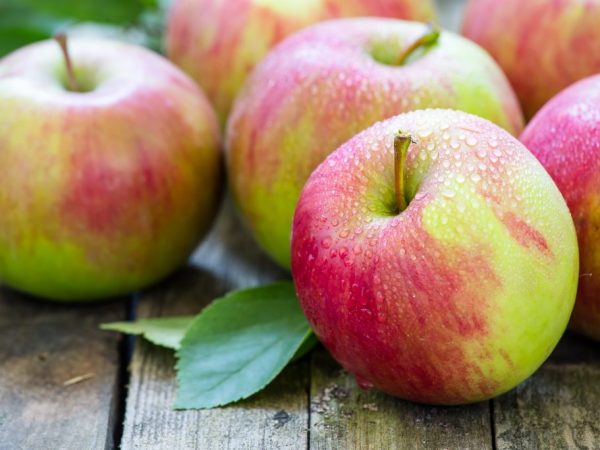
Processed apples contain more calories
Many methods are used to preserve crops, most of which involve heat treatment.
Any processing leads to an increase in calorie content. This is due to a decrease in moisture percentage and the presence of foreign ingredients, be it sugar, wheat or something else. Therefore, it is not recommended to abuse such dishes.
Dried apples
Drying at temperatures below 50° is considered a gentle processing method; it retains most of the nutrients.
Compare: from 1 kg of fresh fruit you will get no more than 150 g of dried fruit - the percentage of moisture is minimal, which is why the specific gravity becomes significantly less.
An average fruit weighing 170-180 g will yield 20-30 g of dried fruit (approximately 65 kcal).
There are about 250 kcal per 100 g. The value may vary slightly depending on the variety used for drying.
Please note: dried apples are not recommended for diabetics due to their high sugar content.
For a healthy person, excessive indulgence in such a dish in most cases provokes stool upset and weight gain, and even more often results in caries. The fact is that the pieces are very sticky and get stuck in the interdental space. You can clean them out only with dental floss or an irrigator; a regular brush will not cope with this.
Apple chips
The product is considered an excellent aid in weight loss. One of the properties is appetite suppression and satiety when consuming even a small amount.
The preparation is extremely simple: peeled and cored apples are cut into circles or slices, placed on a baking sheet and baked for 60-90 minutes at 100°.
If desired, you can sprinkle with vanilla or cinnamon, but these spices stimulate the appetite and cover up the natural taste and aroma.
Apple chips are stored for a long time in a cool, dry place. Glass jars with tight lids are considered the best containers for them.
Energy value: about 250 kcal per 100. 2 medium fruits yield approximately 25 g of chips.
Baked apples
Baked apples are much drier than fresh ones, but they have more moisture than chips or dried fruit.
Per 100 g of this dessert there are about 100 kcal.
The energy value depends on the cooking method:
- Green sour fruit without peel, baked in the microwave - from 50 to 60 kcal per 100 g.
- When using oil, honey, sweetener or powder - 250-300 kcal per 100 g.
- When baked with cream, nuts, honey and sugar - more than 300 kcal.
Culinary experts recommend cooking the dish in the oven to reduce the aggressiveness of heat treatment. This way, more nutrients and nutrients are retained.
Pickled apples

Usually, ripe winter varieties are used for cooking.
This method allows you to preserve the structure of the fruit and its benefits. The calorie content remains practically unchanged and ranges from 35 to 50 kcal per 100 g. The parameter varies depending on the sweetness of the variety used.
It is not recommended to consume soaked fruits if you have metabolic disorders, a tendency to fluid retention, or any diseases of the excretory system.
It is better not to eat more than 3-4 pieces per day.
Frozen fruits
When frozen, the calorie content of the product remains unchanged. However, it is worth understanding that after defrosting, apples are almost impossible to eat due to their destroyed structure - the pulp becomes pureed.
You cannot squeeze juice out of these apples, but they are well suited for making compotes, as fillings for pies and desserts.
Juices and compotes
Homemade apple juice or compote will always contain fewer empty carbohydrates than store-bought ones. Moreover, you can adjust the amount of sugar during cooking.
The energy value per 100 ml is 85-90 kcal. The value varies not only from the type of fruit used, but also from the amount of sugar.
Jam and jam
Both of these desserts are made with a fair amount of sugar, which doesn't make them low in calories. There are at least 200 kilocalories per 100 g, and sometimes even more.
The danger of such food is the high content of fast carbohydrates, which leads to accelerated weight gain. Those losing weight are highly discouraged from consuming such sweets. As a last resort, you should eat them before noon or on days designated for cheat meals.
Apple marshmallow
Marshmallow is made from applesauce, molasses, egg white and citric acid. If manufacturers do not add sugar or sugar substitutes to the dessert, then such a delicacy can be considered dietary.
You can’t eat a lot of it: the specific dry structure and richness of taste quickly becomes boring.
Nutritionists advise preparing the dish yourself to completely eliminate sugar and other harmful ingredients such as preservatives. But even in this case, the calorie content of the product will not be less than 270-290 kcal per 100 g.
Pastila has the same unpleasant property as dried fruits: due to the small amount of water in the mouth, the dessert becomes sticky and gets clogged in the interdental space. After a couple of bites, you should definitely take care of the health of your teeth and clean them with an irrigator or dental floss.
Features of use
To get only benefits from the product, you must follow several rules. It is recommended to eat fresh fruits that have not undergone heat treatment. To prepare the product for future use during the cold season, it is better to take varieties of winter apple trees that tolerate low temperatures well without losing their beneficial properties. In Russia and Ukraine they are represented by Granny Smith, Semerenko, and Jonathan apples. The Golden variety has good frost resistance.
Those who include the product in their diet should know that they should not eat it at night. Before going to bed, you are allowed to consume only green varieties and in rare cases, so as not to gain weight. Another obstacle to eating fruits at night will be their diuretic effect. People suffering from diarrhea are not recommended to eat apples on an empty stomach, so as not to provoke a worsening of the condition.
It is better to consume fruits in the daytime or in the evening separately from main meals. Taking it after a heavy meal will only lead to rotting in different parts of the digestive tract.
A healthy person is allowed to eat 2-3 medium-sized fruits per day without harm to health. For those who suffer from any ailments, preliminary consultation with a specialist is recommended to determine the advisability of eating apples.
To lose weight and maintain your weight within normal limits, it is recommended to have a fasting day on these fruits once a week. During this day, you are allowed to eat no more than 2 kg of apples, dividing the amount into 5-6 equal portions. You should drink only clean water (2 liters per day). It is better to choose green fruits of medium size and without any external defects. Regular unloading using this method will help you lose weight and improve your health.
Calorie content of fresh fruits
Red variety
A red apple has a high concentration of sugar, which significantly affects calorie content.
The standard caloric intake does not exceed 47 kcal.
Red fruits have an aesthetic appearance and also have a pleasant crunch. But the amount of sugar in them is noticeably higher, while there are fewer vitamins in the composition.
The most useful variety is Red Delicious or naturally bred Grushevka.
There are restrictions on the use of this variety. You shouldn't eat them:
- in the presence of cardiovascular diseases;
- if there is a tendency to allergic reactions to elements of the chemical composition;
- people with diabetes need to remember that red apples significantly increase the glycemic index, so they should be eaten in moderation (and it is better to consult a doctor first).
Green variety
Green apples show lower calorie content: approximately 35 kcal per piece.
As far as therapists and pediatricians know, green fruits have a positive effect on the health of people with low immunity, and the pulp also perfectly quenches thirst.
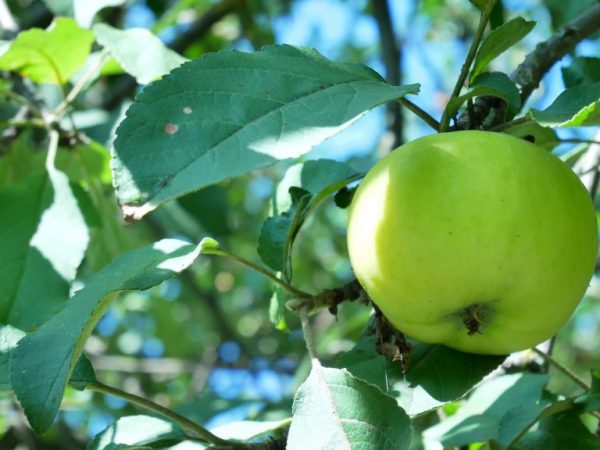
The smallest apples in terms of calories
Many desserts are decorated with them, and they are also abundantly used in apple juice, jams, preserves and other natural products, both in production and at home.
Green fruits (this applies not only to apples) are rarely peeled, because it contains the daily requirement of fiber. But it is the shell that has a surface that is sensitive to chemicals and nitrates. Therefore, we advise you to avoid eating fruits grown in areas with unfavorable ecology.
The most popular green variety for weight loss or proper nutrition is called Granny Smith, slightly lower in the ranking is White Naliv. Cold-resistant Antonovka and American are in 3rd position.
Yellow variety
Approximate calorie content of a yellow apple: 45-55 kcal.
Calories vary in different subtypes (the difference is minimal - 10-20 kcal).
The Golden variety, the most popular among yellow fruits, is in demand on the market due to its refined sweet taste. It also has a long shelf life.
The fruits are used for drying, in home canning and in yeast baked goods. Pickled apples, traditional for Russian cuisine, are also made from them (but they can also be prepared from less sweet subspecies).
By the way, the calorie content of soaked apples is also low: only 47 kcal per 100 g. But in the ratio of BZHU, they are more carbohydrate, although with moderate consumption this will not affect weight in any way.
Important information
Yellow fruits most often have pigmented spots on the surface, dents and other external defects, leading to changes in taste.
Their choice must be approached responsibly, because apples generally belong to the category of products that can easily cause poisoning (even a mild degree).
Honey variety
Honey apples are delicious and have a nice crunchy texture. They are a real delicacy among fruits. But those who adhere to a strict diet should find out how many calories such fruits contain.
Honey varieties contain almost 60 kcal.
Their nutritional value and nutritional value are much higher than those of other varieties, but the paradox is that the composition of these small apples has a minimal amount of fat (close to zero). At the same time, they retain freshness and all vitamins for more than six months. All this speaks about the advantages of this variety.
In Russia, honey apples have not yet become widely known. But these fruit trees are famous for their ability to survive and develop in winter. Even a frozen plant will survive in most cases. Therefore, we can say with confidence that they will soon gain well-deserved fame.
Honey apples are suitable for making fruit chips and baked goods. They are also found in juice.




